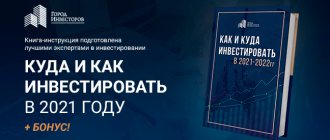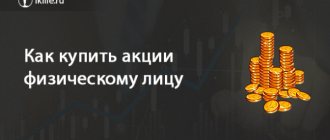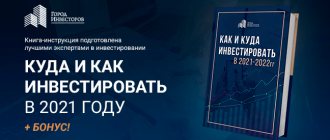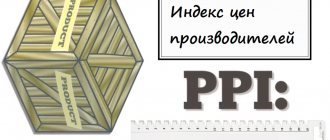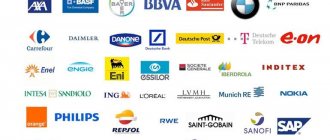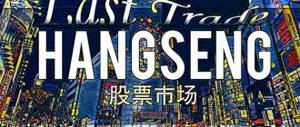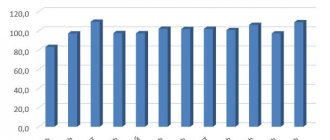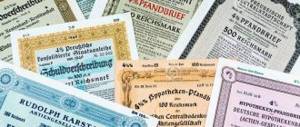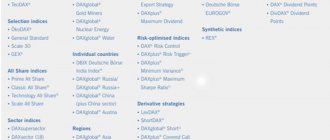Basic moments:
- RTS Index (RTSI)
- Moscow Exchange Index (IMOEX)
- Blue Chip Index (MOEXBC)
- Broad Market Index (MOEXBMI, RUBMI)
- Industry indices
- Bond indices
Stock indices have been indispensable tools for specialists, experts, investors and other market participants for more than a century. Initially, it was Charles Dow’s idea, brilliant in its simplicity, to create a general indicator that would reflect the main trend of stock movements at the end of the trading session. Now stock indices are widely used in the system for monitoring the state of the national economy, dynamics and processes in individual sectors, regions and at the global level. Along with other indicators, such as the volume of gross domestic product, the state of gold and foreign exchange reserves, the state budget deficit and others, they help experts and specialists assess the main trends and make forecasts for the future . The application of these indicators is based on the assumption that the dynamics of shares of a certain sector corresponds to general market fluctuations. Growth speaks of the positive mood of investors, willingness to invest, take risks and indicates economic growth in the country, in the region, in the industry as a whole and vice versa. Investors use these indicators to evaluate the effectiveness of a trading strategy by comparing the dynamics of their portfolio with the dynamics of relevant indicators. Stock indices have long become independent exchange instruments and are the underlying assets for futures and options. So, we can distinguish at least four functions of stock indices:
- market indicators;
- indicators of the state of the economy;
- indicator for assessing portfolio performance;
- tool of the trade.
Moscow Exchange Index (formerly MICEX)
Currently it includes a list of 40 shares of the largest and most liquid companies in the country, quoted in rubles. The list of issuers and their weight is reviewed quarterly. The MICEX index dates back to September 22, 1997; after the merger of the RTS and MICEX exchanges in 2011, it was renamed the Moscow Exchange index.
MICEX Index
List of shares of the MICEX index.
Securities included in the MICEX index
How to buy RTS for a private investor
Let me note right away: we are not buying the indicator itself, but futures on the RTS index. This derivative instrument is the most popular, which is traded on the Moscow Exchange. It also attracts attention because there is a fairly low exchange fee - 0.002%. The average price is about 120 thousand rubles, but you can choose a guarantee from a broker, reducing the price. There are several contracts to choose from that run until March 2021.
RTS is included in the list of one of the most liquid futures on the Moscow Exchange, and this instrument can also be used thanks to other areas:
- ETF with settlements in rubles. The average price to start is from $40, but if you open an IIS, you can receive partial compensation.
- Mutual Fund attracts attention with a relatively loyal start - from 10 thousand rubles, but the 5% commission adds negative aspects to it.
The RTS is currently showing growth, but its “neighbor” MICEX index is also growing, but not at such a high pace. At the time of writing, the latest financial marker was 3304.39 points. As you can see, the Moscow Exchange index, which has been maintained since 1997, is higher, but at the same time they are almost identical in popularity among traders due to the income indicator. And if you are interested in learning about what ROE is and how this indicator is calculated, I recommend reading the finished article on www.gq-blog.com.
In the end, let me summarize: the RTS index shows the state of the Russian economy and it is not surprising that the top ten companies in its composition are occupied by industrial agglomerates. It is very easy to monitor changes on the Moscow Exchange website online, because every weekday from 10.00 to 18.50 these indicators change every second. It remains to wish everyone only a positive experience with this instrument and good profits, no matter what derivative instrument they choose.
Author Ganesa K.
A professional investor with 5 years of experience working with various financial instruments, runs his own blog and advises investors. Own effective methods and information support for investments.
RTS Index
It dates back to September 1, 1995, is calculated in US dollars and has a single calculation base with the Moscow Exchange index. Reflects the total capitalization of the shares of the higher list expressed in dollars.
RTS Index
video on stock indices
Cost and dynamics for all time
4 main events of the Russian economy
- In 1998, Yeltsin declared: there will be no default. But people still lose all their savings. Oil drops to $10 per barrel. The MICEX falls to 19 points.
- Meanwhile, the price of companies increases several times. The fate of Sberbank is noteworthy: the company generates returns of tens of percent per annum, collapsing only in 2008.
- The 2008 US mortgage crisis rocks the global stock market. For Russia, the consequences are catastrophic, the ruble will face an incredible devaluation, and the MICEX index drops to 500 points.
- In the summer of 2021, investors feel optimistic about relations between the United States and Russia. But Trump is not living up to expectations. Investors are withdrawing funds from the exchange, the MICEX has fallen by 23% since the beginning of the year.
Blue Chip Index
The index represents the value picture of the 15 most liquid, valuable, investment-attractive shares of Russian companies, the so-called “blue chips”. Calculated from April 23, 2009, in rubles.
Blue chip index. Key information.
Includes the following list of promotions
List of index companies.
Mutual Funds and ETFs
In fact, it is generally wrong to compare investment results to indexes. How to expect similar future returns. Well, compare. And you will understand, for example, that indices outperform you in terms of profitability (even taking into account the difference in taxation). Want to move away from buying individual stocks and move into an index. And how to do it? You definitely won’t be able to buy a bare index.
The only option left is to buy an exchange-traded fund that tracks similar indices. And the main ambush is the commissions of funds.
And it turns out that you need to compare investments not with indices, but with available investment instruments, in the form of exchange-traded funds. With associated management costs.
If we look at the Russian stock market, we have 3 main players:
- ETF FXRL from the Finex provider has a 10% rate on dividends, as a foreign legal entity. face;
- BUIF SBMX from Sberbank, tracks the total gross return index;
- BUIF VTBX from VTB, tracks the total net return index.
Funds with different fees, tax rates and quality of management. Which one should you choose? The main indicator is a comparison of changes in fund quotes over the same interval (last year, two or three). Whichever fund has grown the most will be the best based on a combination of factors.
Mid and Small Cap Index
The composition includes liquid shares of mid- and small-cap companies. Calculated from December 17, 2012. Includes 27 companies.
Mid and small cap index.
List of companies included in the index.
Warning
I am often asked how to invest a little and get a lot. I always argue that if I had found a way to get rich quick myself, I wouldn’t have run that site. Why, if you can waste your life on a paradise island?
Then they tell me about binary options and the Forex market. Profit from 70%! With such numbers, one of the speculators was bound to get on the Forbes list. But none of them are there.
And that's why. Options and Forex have nothing to do with the stock market. At least in the form in which they appear in advertising.
Yes, derivatives of securities (futures and options) are traded, but by millionaires or entire funds. This is a risky instrument that only a professional investor can afford to use.
Broad Market Index
Currently includes 99 securities selected from the criteria of liquidity, capitalization and free float. Shares with a free-float ratio of at least 5% are included. It represents a certain basis for calculating other Moscow Exchange indices. Originates from December 30, 2011.
How has the index value changed over the past 10 years?
Quotes from TradingView
For 10 years (from the end of 2006 to the end of 2016), the RTS both soared and fell painfully. On May 19, 2008, the index was trading at a historical high of 2498.1 points.
In general, 2008 turned out to be the most volatile year for the Russian market. In the fall, the market recorded two records at once: maximum growth (+22% on the day of September 19) and maximum fall (-19% on the day of October 6).
From the “May peak,” RTS plummeted down to 552.88 points by February 2009. In just a few months, the index fell five times in price! “Pushing off from the bottom,” the graph grew with minor adjustments until April 2011. True, it never reached the previous record - the local maximum was only 2130 points.
It is interesting that the confident downward movement of the market began in the spring of 2011, and not with the advent of the fresh crisis of 2014, as many people think. The Ukrainian conflict, sanctions and cheap oil only added further acceleration to the decline. Over six months (from July to December 2014), the RTS collapsed from 1314 to 825 points. And on days of exacerbation it even dropped to 578 points.
Last year the situation began to level out a little. And at the end of February 2018, the market again came close to the 1000 point mark.
BREAKTHROUGH in your trading!
This information is superbly applied to trading using VSA methods. In fact, this information can make a breakthrough in your trading.
Make a breakthrough in trading!
The leading advantage of opening positions on an index, in addition to high liquidity, is the absence of the need to understand each specific stock, if you have an understanding of the general direction. An index position is advantageous in terms of greater diversification and risk neutrality, but in comparison with investments in a specific enterprise it may bring less profit.
Methods of investing using the main stock indices of Russia
If an investor wants to invest his money in an entire portfolio of securities, which is indicated in the calculation of one of the benchmarks, several methods will be available to him. Among these:
- mirror investing;
- mutual funds;
- derivatives.
Read more about each of them below.
Mirror investments
Mirror investment means a complete reproduction of the portfolio of shares that make up a certain Russian index, taking into account the preservation of all proportions.
This method may be relevant for benchmarks with a small number of exchange components, such as MICEX 10.
If you are dealing with a broad index, then this type of investment is unjustified, since this will require constantly buying and selling a huge number of shares manually, and the minimum amount required to repeat the entire structure of the stock instrument will be at least a couple of million rubles.
Investments in index shares or mutual funds
A mutual fund is a structured product that allows you to invest in Russian stock benchmarks without using a lot of capital.
The whole point of such an instrument is to sell rights to a proportional part of a portfolio of securities (shares) among a wide range of investors. But such products have a number of disadvantages: they are illiquid, settlement is made only after the end of the trading session, and you cannot make transactions in Short (short sales) and use leverage.
But the stock market offers another type of structured product called ETF (exchange-traded fund).
Their advantages, compared to mutual funds, are high liquidity, online quoting and the ability to make short sales. But most importantly, such instruments have very low commissions, so ETFs are gradually replacing classic mutual funds.
Buying futures
Futures are derivative instruments for delivery or settlement of an asset (index) in the future, but at predetermined prices.
At the same time, futures contracts allow the use of leverage, i.e. in his transactions, the trader uses borrowed funds, which can potentially increase his profit, but on the other hand, proportionally increases the risk of loss of capital.
The downside of this toolkit is its urgency. Futures expire every three months; after this period, you will have to buy a new contract. Therefore, this method is more related to speculative trading, and the “buy and forget” strategy is not applicable here.
How to make money on the index?
If an investor has a certain scenario and understanding of the development of the entire economy or a specific sector, he can open positions in futures for a certain index. The risk in such a position is less than a position on a specific stock, since it has greater diversification. For example, an investor may decide that economic centralization in the state will only increase and small companies will be administratively squeezed out of the market, in which case it would be reasonable to open a position on the mid- and small-cap index for sale.
What an investor should definitely know about these indices
By analyzing index instruments of the Russian stock market, an investor can find answers to some important questions:
- What is the general sentiment of market participants?
- What is the overall market volatility?
- Which individual stocks could benefit from an influx of funds from index funds when included in the calculation of a popular benchmark.
- How effective is a diversified approach to investing in a given state and industry?
